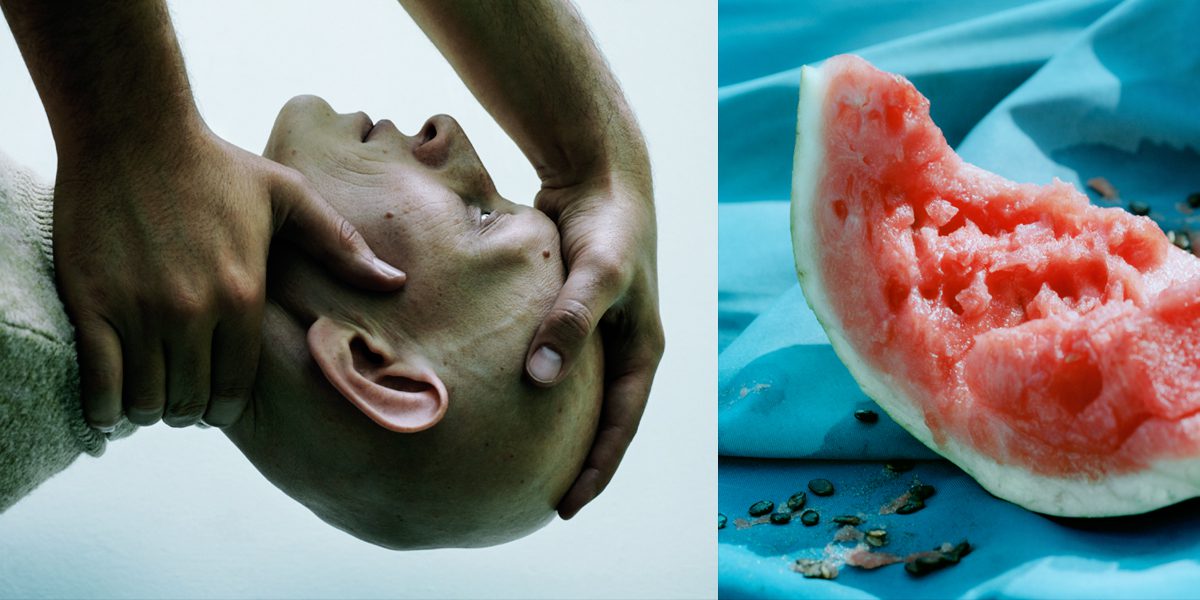It is the 4th year that the International Photography Fair PhotoLondon returns to Somerset House. From across the world over 100 galleries, 18 countries and 22 emerging galleries were showcasing the best from old masters to emerging artists that photography can offer.
The core of this year’s fair was based on sensual shapes, landscapes, still lives, abstract objects and nudity. The Master of Photography was dedicated to Edward Burtynsky curated by Flowers Gallery on the Embankment level.
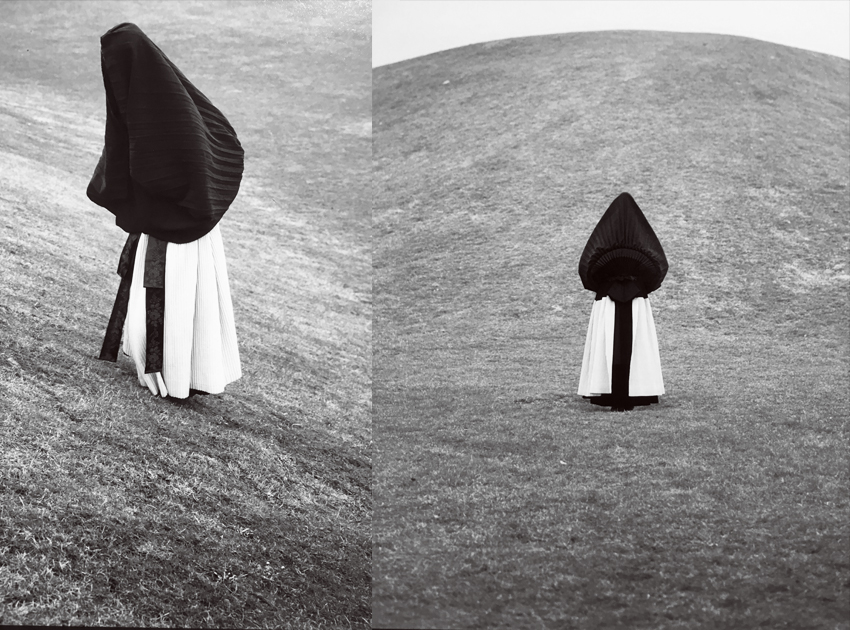
ASBAEK GALLERY / Copenhagen
The Copenhagen gallerist Martin Asbæk brought an all-female artist presentation to London, including Trine Søndergaard from Danmark. Søndergaard is well known for her contemplative portraits and haunting images. For PhotoLondon she presented a chilling series of black & white triptych images, photographing a woman in a mourning dress, reminiscent of late 19th Century Danish paintings.
“I wanted to photograph the inner mental state and create the stillness and quietness within which it occurs.”
Trine Søndergaard lives and works in Copenhagen, she often collaborates with her partner, the photographer Nicolai Howalt.
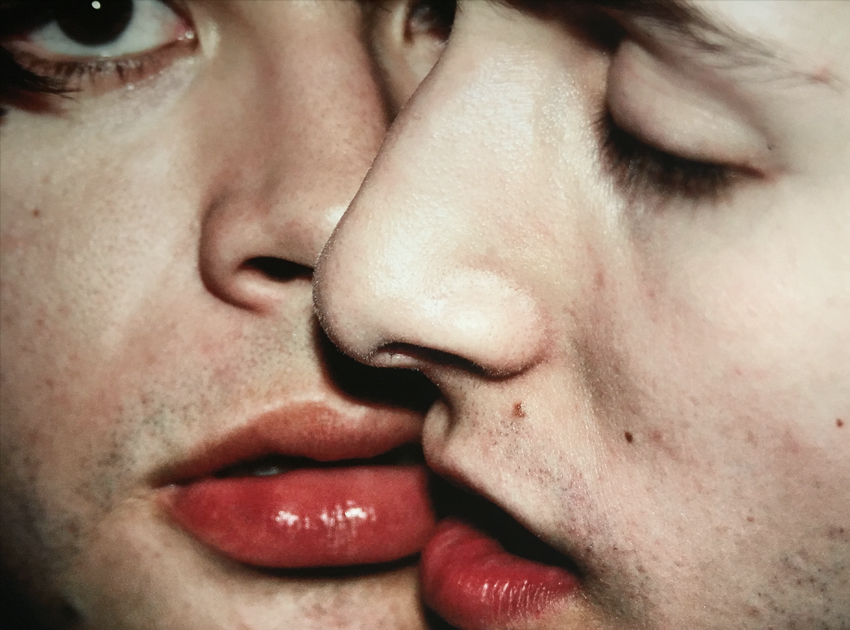
ALMANAQUE GALLERY / Mexico City
The intoxicating work of Jesús León brought by Arturo Delgado of Almanaque Gallery from Mexico City has already gained international recognition.
León is a self-taught documentary photographer with a rare contemporary eye. Almost two decades ago, he started a project “Domestic Fine Arts”, which has already accumulated over 200.000 photographic images from Mexico City’s vibrant subcultural scene. The 40s Mexican cinema also played a major influence in his work. Being painfully shy when he started, Jesús León’s photographs quickly began connecting him with the people he photographed in a delicate complicity.
His imagery does not only have the glamour of a fashion magazine, much more they come to embody deeply romantic, sensual scenes. In León’s work, the intensity of life itself becomes fragile and fleeting, displaying a dark version of love and destruction.
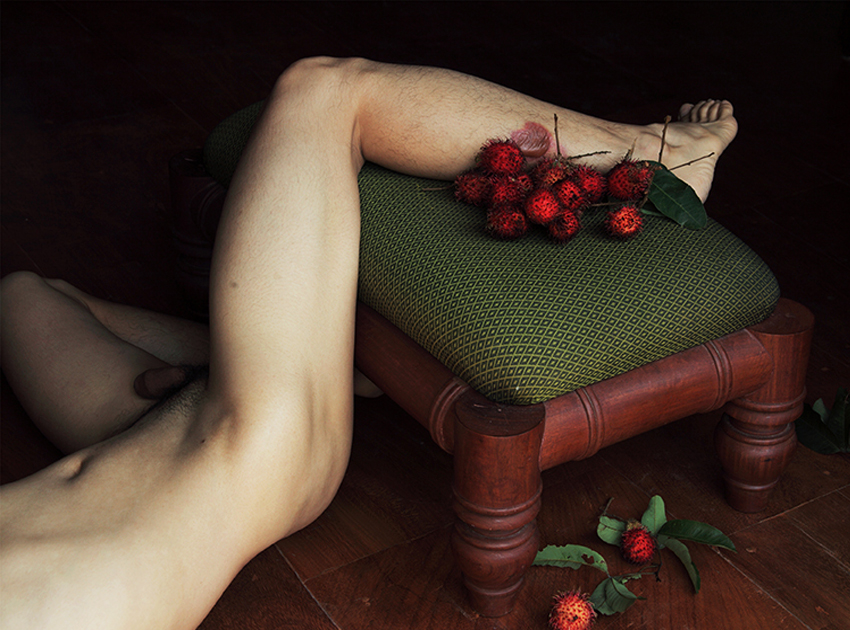
“I Miss You Already – Burn” by Shen Wei / Photo © Courtesy of Shen Wei and On-Gallery Photo London 2018
ON-GALLERY / Beijing
The Shanghai-born, New York-based photographer Shen Wei is the master of seductive intimate portraits, poetic landscapes, still-lives and erotic botanic images. His work is a fine balance between private and public spheres. He often challenges his traditional but conservative culture by explicit self-portraits and nudity.
Following his series “Chinese Sentiment” being consistent with his sensual and emotional style, Shen turned the lens upon himself, producing “I Miss You Already”, a series of achingly sentimental nude self-portraits revealing his processes of self-reflection and discovery.
His nudity creates a seductive and complex ambience though a provocative way to explore his sense of security through the tension between freedom and boundaries.
“It was a statement to break through this stereotyped image of Chinese men being not sensitive and not emotional. The most important thing is to do my work in complete freedom.”
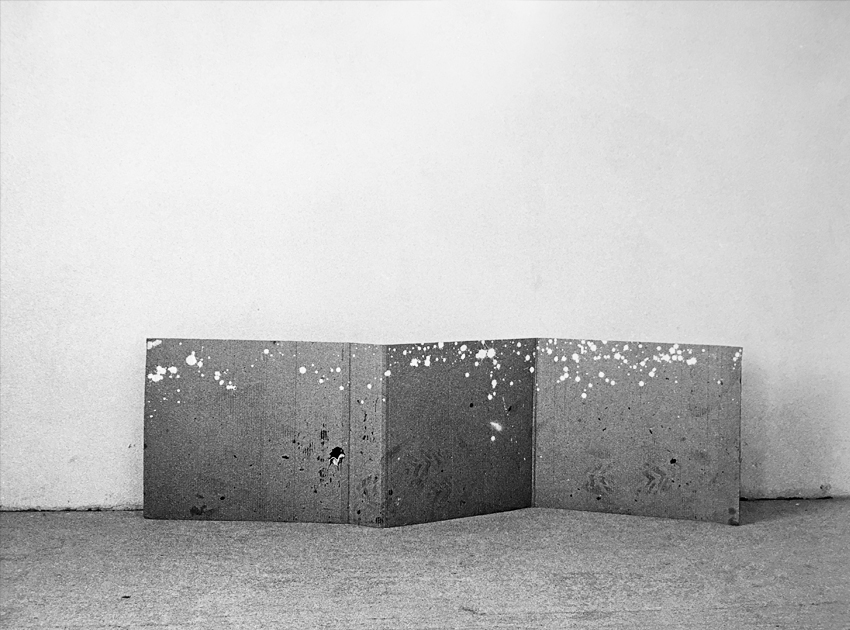
MATERIA GALLERY / Rome
It is already a tradition to see Matéria Gallery from Rome at the Discovery section. This year they presented the photographic work and installation of Giulia Marchi.
Marchi’s images are the result of photographic experimentation often exemplified by her use of polaroids and pinhole cameras with a camera obscura effect, discovering herself in this simple artifice and conceiving it as something magical. She builds her own cameras and for her shots, she uses analogue source materials.
The unexpected results of this approach, the purity of these imprecisions, the stripped down gaze associated with this type of photographic methodology, restore a purified vision of reality described through abstraction.
Marchi’s research is heavily reliant on her passion for literature and written narrative. In collaboration with the internationally recognized Italo-Palestinian Mustafa Sabbagh, she produced the artist book 17:17, currently housed in MAXXI Museum’s collection in Rome.

ART+TEXT GALLERY / Budapest
It is practically an impossible task to write about a dozen photographers and decades of vibrant history when Hungarian photography undoubtedly occupies a distinctive part of the world’s 20th Century chapter. One cannot neglect the influence of Brassaï, André Kertész, Robert Capa, Martin Munkácsi, László Moholy-Nagy, Lucien Hervé.
Following that grand tradition, Art+Text Gallery from Budapest that plays a significant part in the Eastern-European art scene, debuted with a unique and personal selection of Neo-Avant-Garde Hungarian photography from 1960s and 70s including Laszlo Haris, Tibor Hajas, Tibor Szalai, György Stalter, Janos Vetō, Csaba Koncz, Lazlo Lugosi, Gabor Kerekes and Istvan Szirányi.
What makes the exhibited work unique is the key difference that separates Hungarian Neo-Avant-Garde artists from the Western European and North American ones that in Hungary they worked from 1956 until the late 1980s under a dictatorship in an authoritarian state. All forms of cultural production were governed by inscrutable and fluctuating censorship, and although artists were often placed on the periphery of official culture, they played a perpetual game with the authorities, challenging socialist morals. Eventually progressive art was produced with international standards and photography was one of the most significant medium. In conceptual art, humour became a strategy of dissent and a survival tool, making the task of censors more difficult.
These exhibited very gifted photographers were the central force of their generation and stood out from the community by their use of unique, raw methods and materials. We admit with full confidence, that Hungarians determined and shaped the development of visual perception.
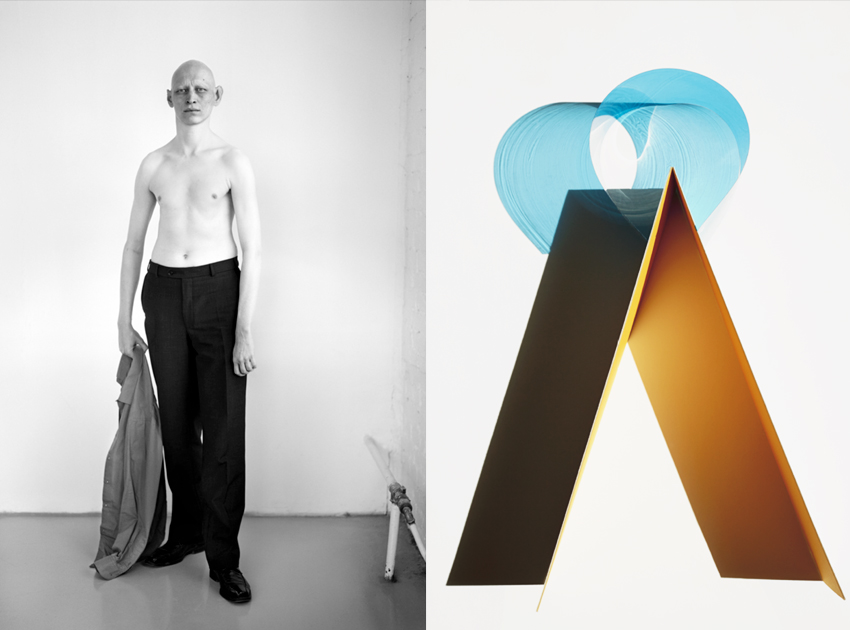
WEBBER GALLERY / London
One of the most prominent photographic series, presented by Webber Gallery from Fitzrovia, was effectively hidden in a little green box on the corner bookshelf. It was a fine selection of 50 loose prints by Hungarian Marton Perlaki following his successful solo exhibition “Elemer”. But who is Elemer? He is an enigmatic character in Perlaki’s first published book built around a protagonist, sculpted both literally and by gestures.
It is a hallucinatory and strange story with Elemer’s portraits, still lives, landscapes, watermelons, cigarette cards and disposable objects colliding with one another.
Perlaki’s journey took him from his native country to New York then back to London while his work progressed through fashion and photojournalism to cinematography and art. His lens perfectly captures anything from meticulously staged still life to the awkward and tender charm of human interactions and objects. His photographic images are strongly sculptural and influenced by childhood memories wrapped in emotions, humour and irony well-rooted in a post-communist country.
Beside his box+book combo, Webber Gallery exhibited one of his large-scale prints the “Golden Egg”.
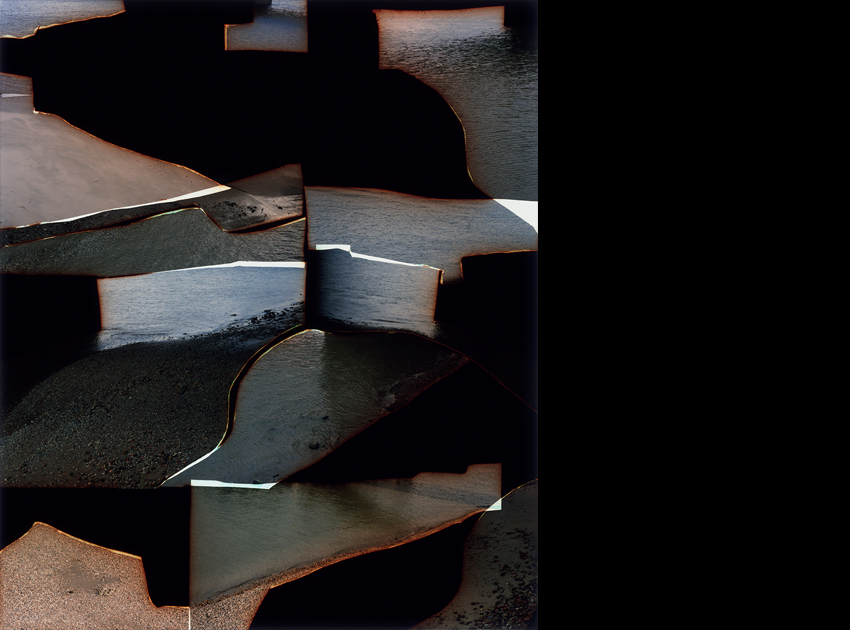
Since its launch in 2015, PhotoLondon has attracted many satellite events including Peckham24 Photographic Festival.
PECKHAM24 / COPELAND GALLERY / London
Getting out of the chaos of Peckham Rye from this utopist scene of dead animals hanging in butchers’ windows and shops selling cheap velvet slippers, a narrow entrance led us through a labyrinth of multicoloured storefronts to a vast inner courtyard with bars, galleries and nano-space diners. This hidden treasure is well known within the circle of artists and eccentrics.
Last week, Copeland Gallery housed five exhibitions dedicated to emerging artists and each section was curated by a different person. FT’s Weekend Magazine supplement specially commissioned the section “My London” superbly curated by Emma Bowkett. One of the outstanding artists was Dafna Talmor.
DAFNA TALMOR
The magic landscapes of Venezuela, Israel and London were the core of Dafna Talmor’s ongoing series “Constructed Landscapes”. For “My London” she created an image collaging medium format colour negatives photographed in London, along with the Thames from Somerset House to Southwark bridge, focusing on one location and shot on the same roll of films. The titles made up with codes of the location, the number of negatives used and the year the photograph was taken. Her process is based on pure experimentation, slicing and overlaying elements of landscapes, abstracting them beyond recognition, resulting in an illusory scenery. Talmor’s work is mixed with personal stories to strip the elements from their original connotations and allude to a utopian space by disrupting composition and distorting perspectives.
Dafna Talmor, based in London, represented by TOBE gallery, Budapest.

HANNAH HUGHES
Still, part of Peckam24, in the “Concealer” section of Copeland Gallery curated by Tom Lovelace, a series of delicate, small-scale collages were presented by “double-agent” Hannah Hughes who is not just an artist but during office hours a well-know press-manager at Flowers Gallery. Her Flatland series started back in 2014, is already well received in collectors’ circles. The initial title comes from Edwin Abbott’s Victorian novel set in a two-dimensional realm. Hughes plays with cutouts and inverse of figurative elements of magazine images collected over the years, using positive-negative shapes painstakingly masked and overlaid on top of each other, concealing the original figurative shape, generating geometric sculptural properties that are continually repeated, but never identical. These fugitive, alternative pieces are often reminiscent of the fine and irregular curves of the human body.
Hannah Hughes will next be showing as part of a group exhibition “The Momentum” at Angus-Hughes Gallery in July.
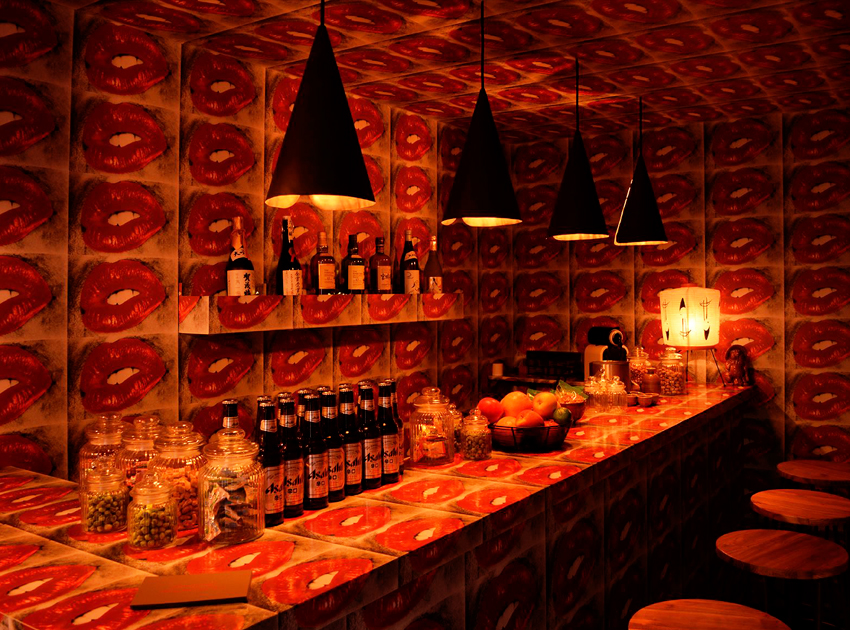
HAMILTONS GALLERY / London
Finally, there is no art fair without fun. Hamiltons Gallery’s installation the “DaidoLipBar” by Daido Moriyama was certainly a good one, and although I could not have my Pisco Sour, they assured me, if I buy the artwork (the bar), anything can be possible.
Top Photo: (left) “Self Defense nº1” and (right) “Watermelon Blue” by Marton Perlaki / Photo-montage © Courtesy of ZOLTAN+

